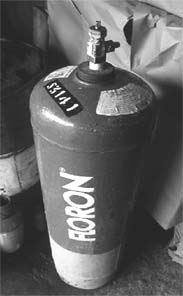Substance Abuse
 the deadline for concurrence with the Montreal Protocol is fast approaching. In India confusion reigns supreme. Neither the government nor Indian industry is sure of what course to pursue. Both are baffled about the options available for technology transfer to help phase out chlorofluorocarbons ( cfc s).
the deadline for concurrence with the Montreal Protocol is fast approaching. In India confusion reigns supreme. Neither the government nor Indian industry is sure of what course to pursue. Both are baffled about the options available for technology transfer to help phase out chlorofluorocarbons ( cfc s).
Under the protocol signed in 1987, developing countries, including India, are committed to freezing their cfc usage at the average 1995-97 levels and achieve a 50 per cent cut by the year 2005. cfc s have to be phased out completely by the year 2010.
But phasing out of these gases entails availability of alternatives. The protocol assists in this transition by providing the affected producers and units with funds to acquire technology on "favourable terms'. A multilateral fund has been set up under the protocol to provide money for such transition. Different substitutes are available to the affected sectors like refrigeration, air-conditioning, foam, aerosol and fire extinguisher manufacturers, for phasing out ozone depleting substances ( ods) . Some of these substitutes are available in India. But for most the Indian industry has to look West.
The problem begins with the plethora of options before the industry. Each sector has multiple substitutes to choose from and looks up to the government for guidance. However, the government is just as perplexed and unsure.
Baffling issues For example, take the case of hfc -134a, a substitute available to the refrigeration and air-conditioning sector. Till the recent past, the technology was not indigenously available. It had to be imported under the protocol regime. A breakthrough was achieved by the Hyderabad-based Indian Institute of Chemical Technology ( iict )
Related Content
- Question raised in Rajya Sabha on Achievements in terms of social justice, 26/06/2019
- Relationship between nonmedical prescription-Opioid use and Heroin use
- Judgement of the National Green Tribunal regarding Nirma's cement plant site in Bhavnagar, Gujarat, 17/11/2014
- Beware, weight-loss pills can kill
- NGOs demand hike in tax on tobacco products
- Prescription OxyContin abuse among patients entering addiction treatment
